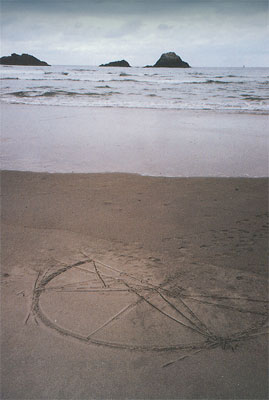
Tidal Treatise. In Venice, on the barges carrying drinking water, Italian mathematician Galileo Galilei (1564-1642) watched the water slosh back and forth depending on the speed or direction of the boat, and, in his Treatise on the Tides, concluded that the two Copernican motions of the earth (turning on its axis once a day and journeying around the Sun once a year) were what caused the ebb and flow of bodies of water. He did not consider it possible that an object as distant as the Moon exerted so great a power that it could move the seas. Simultaneously, Galileo's German contemporary, Johannes Kepler (1571-1630), proposed three laws of planetary motion which included the recognition of the centrality of the Moon in tidal theory. Born the year Galileo died, Sir Isaac Newton distilled Kepler's ideas and further clarified theories about wave motion in his law of universal gravitation, published in 1687.
Barefoot, I scurry across the beach, hurrying to imprint ephemeral mathematical inscriptions into estuary sand before the renderings are erased by the ebb and flow of salt and river water. The sea encroaches and dissolves the archeoastonomy diagrams of the Moon's tug on the earth's liquid bodies. These drawings are dedicated to my father and deceased husband, both mathematicians; to my son, the architect of hope; and to the Japanese idea of mujo -- the bittersweet impermanence of all life.
B.I.